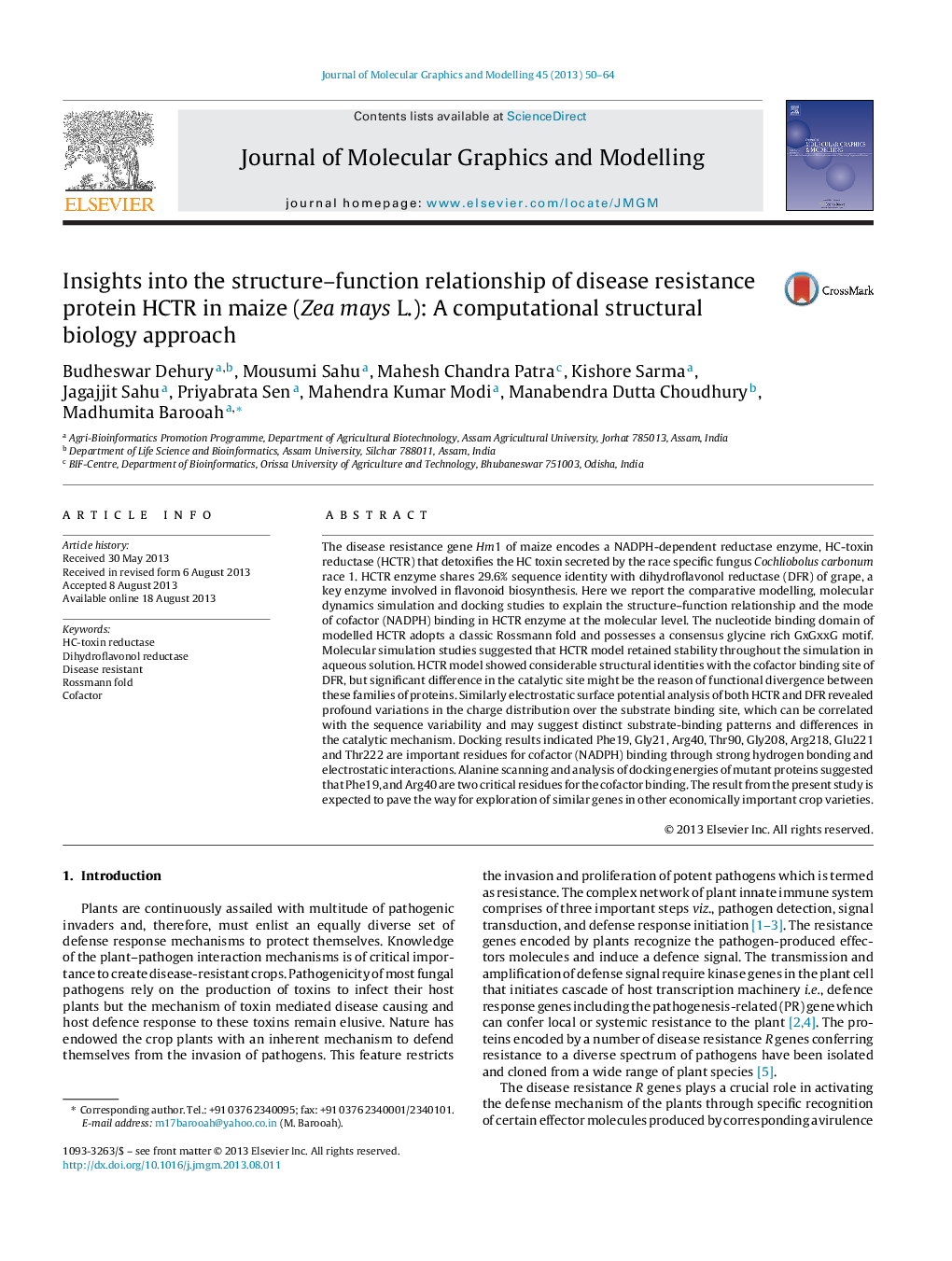| کد مقاله | کد نشریه | سال انتشار | مقاله انگلیسی | نسخه تمام متن |
|---|---|---|---|---|
| 443626 | 692742 | 2013 | 15 صفحه PDF | دانلود رایگان |

• The HCTR enzyme encoded by disease resistance gene Hm1 of maize was modelled.
• The binding specificity of cofactor (NADPH) towards HCTR was studied via docking.
• HCTR adopted a classic Rossmann fold topology with a glycine rich GxGxxG motif.
• Hypothesized the mode of catalysis and substrate binding of HCTR enzyme.
• The protein reported to be functionally divergent from other reductase enzymes.
The disease resistance gene Hm1 of maize encodes a NADPH-dependent reductase enzyme, HC-toxin reductase (HCTR) that detoxifies the HC toxin secreted by the race specific fungus Cochliobolus carbonum race 1. HCTR enzyme shares 29.6% sequence identity with dihydroflavonol reductase (DFR) of grape, a key enzyme involved in flavonoid biosynthesis. Here we report the comparative modelling, molecular dynamics simulation and docking studies to explain the structure–function relationship and the mode of cofactor (NADPH) binding in HCTR enzyme at the molecular level. The nucleotide binding domain of modelled HCTR adopts a classic Rossmann fold and possesses a consensus glycine rich GxGxxG motif. Molecular simulation studies suggested that HCTR model retained stability throughout the simulation in aqueous solution. HCTR model showed considerable structural identities with the cofactor binding site of DFR, but significant difference in the catalytic site might be the reason of functional divergence between these families of proteins. Similarly electrostatic surface potential analysis of both HCTR and DFR revealed profound variations in the charge distribution over the substrate binding site, which can be correlated with the sequence variability and may suggest distinct substrate-binding patterns and differences in the catalytic mechanism. Docking results indicated Phe19, Gly21, Arg40, Thr90, Gly208, Arg218, Glu221 and Thr222 are important residues for cofactor (NADPH) binding through strong hydrogen bonding and electrostatic interactions. Alanine scanning and analysis of docking energies of mutant proteins suggested that Phe19, and Arg40 are two critical residues for the cofactor binding. The result from the present study is expected to pave the way for exploration of similar genes in other economically important crop varieties.
Figure optionsDownload high-quality image (152 K)Download as PowerPoint slide
Journal: Journal of Molecular Graphics and Modelling - Volume 45, September 2013, Pages 50–64